Lucky LH-1B Handleiding
Bekijk gratis de handleiding van Lucky LH-1B (1 pagina’s), behorend tot de categorie Visvinder. Deze gids werd als nuttig beoordeeld door 105 mensen en kreeg gemiddeld 4.5 sterren uit 53 reviews. Heb je een vraag over Lucky LH-1B of wil je andere gebruikers van dit product iets vragen? Stel een vraag
Pagina 1/1

Sonar transmitter
(floating on the water)
Sonar reflection
signal
Sonar signal
Connection method
(wireless)
Simulation diagram of sonar
transmitter usage scene
Sonar receiver (portable)
1.Usage scenario diagram 2.Product introduction
3).Turn on the receiver
Click on the power key( )sonar receiver will turn on.
1).Wireless signal indication: wireless signal of probe
strength identification.
2).Water depth: the distance from the launch point of
the wireless transmitter to the bottom of the water
(note that there is no reading when the water depth
exceeds the maximum of detection, depending on the
terrain intelligence value).
3).Water temperature: The wireless transmitter has a
built-in temperature sensor that detects the tempera-
ture of the water surface in the area where the transm-
itter is located.
4).Receiver power indication: sonar receiver with lithi-
um battery power indication identification.
5).Fish icon: fish imaging generated by a fish detector
based on sonar signal feedback .
6). Fish depth: the depth of the fish finder is determ-
ined by the detector based on sonar signal feedback.
7).Range of detection: the depth range in which a fish
detector detects underwater conditions of the fish .
8).Underwater environment: the fish finder determin-
es the generated underwater contour according to the
feedback by the sonar signal . The darker the color,
the higher the density, the harder the bottom; the lig-
hter the color, the lower the density and the softer the
bottom.
1).Startup & Shutdown
① Click on power key, the logo interface display 3
seconds into normal detection mode.
② Press the shutdown button to jump out of the shu-
tdown prompt, then continue to hold down the key
until the power is off.
Note: in the function setting , no other operation in 5
seconds, the interface will automatically jump back to
the sonar interface.
2)Working mode and demo mode switching
① The receiver is set to working mode by default, pr-
ess the MENU key to enter the menu interface in the
working interface, select demo mode to press the
ENTER key to enter the demo mode interface.
② Press the MENU key to enter the menu interface in
demo mode and press the ENTER key to enter the
working interface.
3). Backlight brightness
Backlight brightness: that is main screen brightness.
This menu has 9 levels that level 1 is the darkest and
level 9 is the brightest.
4). Unit setting
Unit setting: that is to set the depth and temperature
of the system.
5). Alarm setting
①Depth alarm: depth alarm is generally used to pre-
vent shallow alarm setting. When the actual of water
depth is lower than the setting value, the fish detector
will give an alarm to remind you that the currently
water depth is too shallow.
② Power alarm: when the actual power is lower than
the setting value, the fisherman will alert you to charge
the equipment.
6). Power saving mode
Power saving mode: when there is no operation and
fish in 3 minutes after the power saving mode is tur-
ned on, the screen brightness will be automatically
extinguishes the screen. If there is a key operation or
fish, it will be exit the power saving mode.
7).Fishing mode
① Common mode: basically all fish ponds, reservoirs
and other environment can be used.
② Shallow water mode: suitable for the detection of
fish ponds, reservoirs, banks and other flat part of ar-
eas above 0.7 meters and below 4 meters.
③ Deep water mode :4 meters above fish ponds, re-
servoirs, shore and other flat environment detection.
④ Slope terrain model: suitable for the detection of
large slopes on the banks of mountain ponds and re-
servoirs.
8). Chart speed
Chart speed: setting the frequency of sonar data
sampling.
Note: the more frequently sonar data acquisition, the
more accurate of the underwater situation displayed
on the screen. However, amounts of data will result
in a corresponding system response slowly.
9). Parameter adjustment
①Sonar sensitivity: that is sonar intensity. The more
sensitive, there will be more sonar signals returned
and displayed on the screen, and more sensitive fe-
edback by underwater. But if the water is shallow,
too higher sensitivity will also increase the reflection
of too many acoustic signals, resulting in the display
of the wrong signal. If the sensitivity setting is too
lower in the water depth environment, it will be diffi-
cult to detect the corresponding underwater inform-
ation. Operation suggestion: in the case of deep water
set, the sensitivity high; in the case of shallow
water, set sensitivity low.
②Depth range: refers to the fish situation and bottom
information in the depth range displayed on the scr-
een. When the depth range is set to automatic, the
depth range will automatically display all the inform-
ation from the surface to the bottom of the water
with the change of the current detected depth. When
the depth range data is manually set, the screen di-
splay interval will display the fish situation informat-
ion in the depth range of your choice. If the current
detection depth is greater than the lower depth limit
you set, the bottom outline beyond the set range will
not be displayed on the screen.
③Fish alarm: you can choose to close the fish alarm,
or choose large, medium and small fish alarm. When
you only need to alarm the big fish, only set the big
fish alarm. But the fish alarm function will detect the
fish alarm when after opening the fish icon function.
10). Fish display setting
Fish icon: the fish icon function is to use advanced
signal processing to identify the returned sound wa-
ves, the detected fish information is accurately disp-
layed on the screen.
You can choose to display a fish icon or a bow icon.
11). Restoring default values
Restoring default value: that is restore equipment
parameters for factory settings.
Follow the steps below to use and maintain will
maximize the use effect of the fish detector
1).Atter the wireless probe opens the cover, remove the
insulating plastic sheet and power on. When not in use,
it is recommended to snap back the plastic back or
remove the battery.
2). Atter using in the seawater environment, rinse the
wireless probe with clear water.
3).Please use soft cloth to clean the screen on the mac-
hine surface to protect the mirror surface from scratch-
ing.
4).Don't place the machine under the front glass of the
car or under the environment of high temperature, this
will cause damage to the precision device inside the
machine, and then affect the performance of the mac-
hine.
5. Fumction setting
6. Common misunderstandings
and precautions
7. Maintenance
Maximum detection depth :147 ft/45m
Sonar frequency :125 KHZ
Detection angle :90°
Operating distance:328 ft/100m
Battery :3.7 V rechargeable lithium battery
8. Product parameters
4.Screen reading
TEMP
DEPTH
Left key
Menu Enter
Screen
Magnetic charging port
Antenna
Right key
Up
Power key/down key
1).Recevier
3.Operational instruction
1)Fix the wireless transmitter to the fishing
line.
Note :
2).Put the wireless transmitter into the water.
It can be cast out by using your fishing rod, but also the fishing
line tied directly cast out by hands .
Battery cover
Insulating gasket
CR·2032battery
Battery box
Hole B
Metal probe Hole A
Build-in antenna
O-Seal ring
2).Wireless sonar sensor
①.The fishing line can be passed through and fastened from
the A of the hole.
②.It can pass the fishing line through the B of the hole, use the
wireless sonar sensor as floating, it is recommended to hang ,
no more than 30 grams.
LUCKYSMART
LH-1B
MENU
ENTER
14
5
6
7
2
3
8
LUCKYSMART
LH-1B
MENU
ENTER
LUCKYSMART
LH-1B
MENU
ENTER
LUCKYSMART® Sonar
Fish Finder
No signal or
signal instability
1.The distance between the receiver
and the wireless transmitter that ex-
ceeds the maximum receiving dista-
nce.
2.If there is an obstacle between the
wireless transmitter and the receiver,
the wireless signal will be disturbed
and is recommended for use in an
open environment.
No signal or
signal instability
3.The movement of wireless transm-
itter is too fast, resulting in the unsta-
ble wireless signals.
4.Waves on the water surface cause
wireless signal interruption and are
recommended for use in a stable
environment.
5.Check if there is water in the wire-
less transmitter, it is recommended
to tighten the cover then put it in the
water.
Inaccurate
depth
1.Fish finder need to be used in nat-
urally open water.
2.Wireless transmitter signal is stro-
ng, in the same area to avoid the
use of other fishing detectors.
3.Check to see if the wireless trans-
mitter is undercharged.
4.To check if there is water in the tr-
ansmitter, it is recommended to tigh-
ten the lid and put it into the water.
5.Detect detection ranges. Whether
the water depth is less than 0.7 m.It
is recommended for use above 0.7m
in water.
No fish
detected
1.No fish in current water.
2.Check that the fish icon and fish
alarm are working.
screen
display problem
screen
display problem
The device
keeps calling
and not working
1.If the display shows large clutter,
may be fishing nets by underwater, it
is recommended to avoid the detect-
ion of the water.
2. If the screen shows the whole blue
color and the surface clutter is too
stronger, it is recommended to use in
naturally open water.
1.Check the shallow water alarm is
turned on, if open, please close it in
time.
2.Failure to receive wireless transmi-
tter signals can cause alarm.
Product specificaties
| Merk: | Lucky |
| Categorie: | Visvinder |
| Model: | LH-1B |
Heb je hulp nodig?
Als je hulp nodig hebt met Lucky LH-1B stel dan hieronder een vraag en andere gebruikers zullen je antwoorden
Handleiding Visvinder Lucky

14 November 2024

14 November 2024

14 November 2024

14 November 2024

1 Juli 2023

18 Mei 2023

3 Mei 2023

24 April 2023

15 April 2023

15 April 2023
Handleiding Visvinder
Nieuwste handleidingen voor Visvinder

9 September 2025
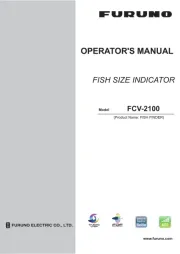
23 Juli 2025
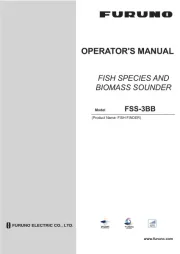
22 Juli 2025
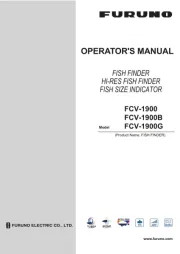
21 Juli 2025
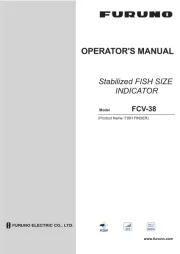
21 Juli 2025
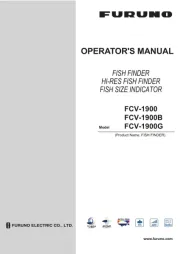
21 Juli 2025
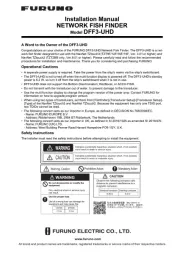
21 Juli 2025
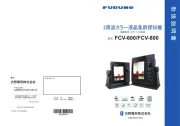
21 Juli 2025
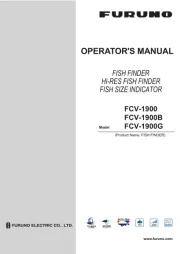
21 Juli 2025
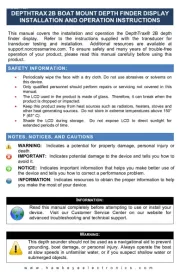
5 Juli 2025